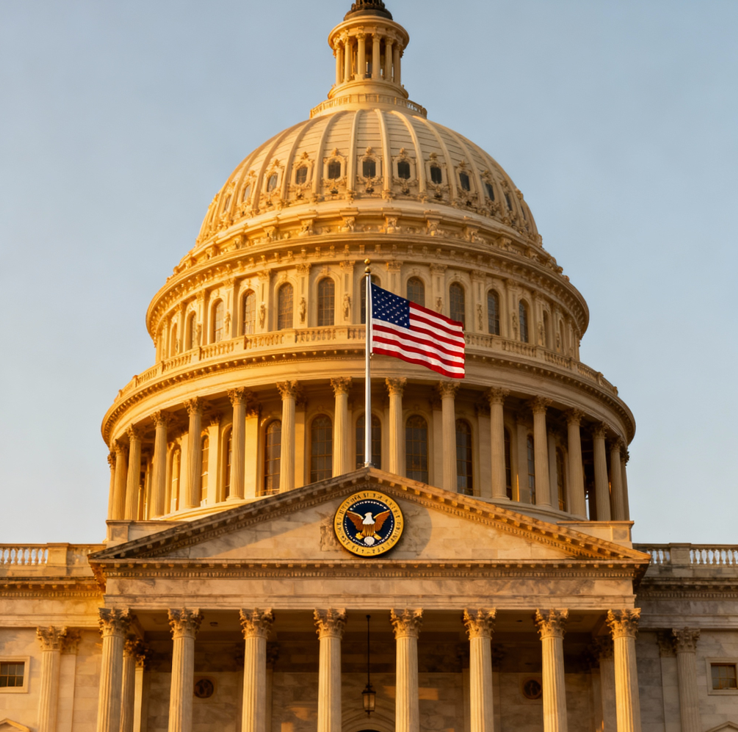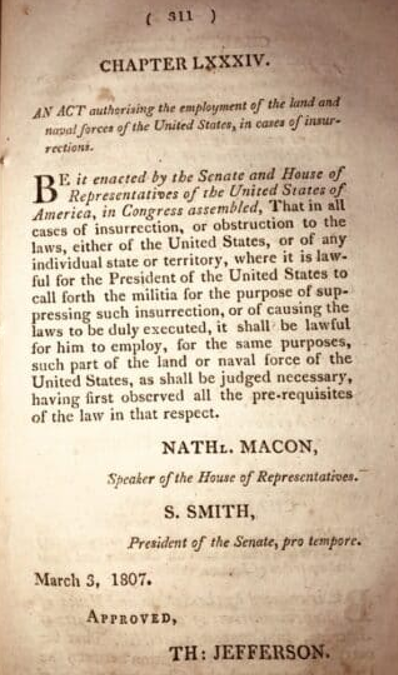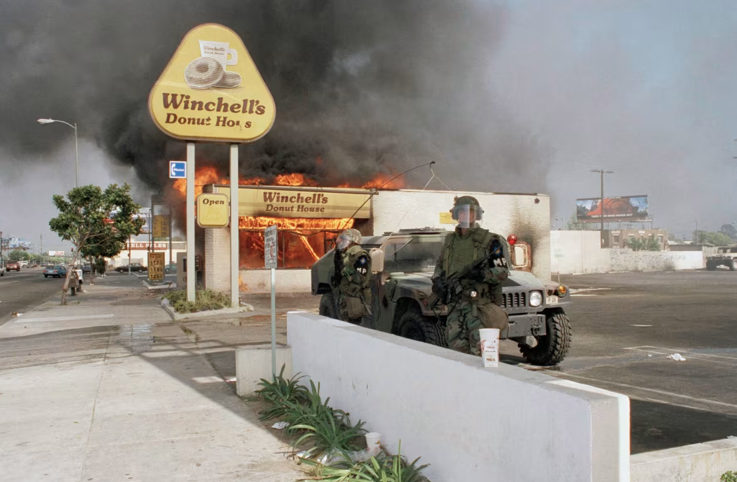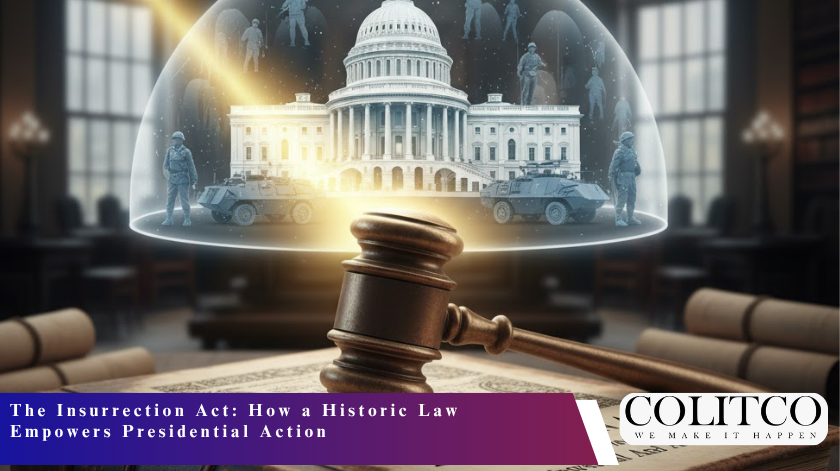The Origins of the Insurrection Act
The Insurrection Act is a federal law passed in 1807. Congress designed it to empower the President to deploy military forces within the United States. The law allows the use of the Army, Navy, Air Force, and the federalised National Guard to suppress insurrections, rebellions, or civil disorder. The Act stands as a notable exception to the Posse Comitatus Act of 1878, which restricts military interference in civilian law enforcement. Its core purpose is to enable federal intervention when state authorities cannot maintain order.

When the Law Takes Effect: Conditions for the President’s Action
The Act states the President can invoke it under specific conditions. These include when unlawful obstruction or rebellion makes enforcing laws impracticable by normal judicial or police process. The President must first issue a proclamation ordering unlawful actors to disperse unless immediate action is necessary. This requirement ensures the Act’s use as a last resort. Upon invocation, federal military forces can enforce laws and restore order even if state authorities resist. The law grants the President extraordinary powers to override state control of the National Guard in emergencies.

The historical Insurrection Act of 1807 establishing presidential emergency powers
Turning Points in History: Notable Uses of the Insurrection Act
Since its inception, the Insurrection Act has been invoked approximately 30 times, mostly during crises involving widespread unrest. One of the earliest uses was by President Andrew Jackson in 1831 to suppress Nat Turner’s slave rebellion in Virginia. During the Civil Rights Movement, Presidents Eisenhower and Kennedy activated the Act to enforce school desegregation after the Supreme Court’s Brown v Board of Education ruling. Troops entered Arkansas to ensure integrated attendance at Little Rock Central High School in 1957. The Act’s most recent significant use came in 1992 when President George H. W. Bush deployed federal forces to quell the Los Angeles riots sparked by the acquittal of police officers in the beating of Rodney King. These historical applications demonstrate the Act’s role in managing civil disorder when local authorities failed.

Two National Guardsmen stand guard outside a burning donut shop in Los Angeles on April 30, 1992
Modern-Day Debates: The Insurrection Act in Recent Political Discourse
In 2025, the Insurrection Act has gained renewed attention amid heightened social unrest and protests across American cities. President Donald Trump has mentioned the Act explicitly as a potential tool to deploy troops where local governments and courts hinder law enforcement efforts. Trump remarked, “We have an Insurrection Act for a reason. If people were being killed… courts or governors or mayors were holding us up, sure” he would consider invoking the law. This statement underscores the Act’s intended function in extreme cases of civil breakdown.
The federal government’s attempts to activate the Act in cities such as Portland, Oregon have sparked legal and political challenges. Judges have intervened to block or limit deployments, citing concerns over state sovereignty and civil rights. Several state governors criticised federal troop deployments, calling them unconstitutional and an abuse of power. Despite this opposition, the federal administration maintains the legal right under the Insurrection Act to intervene when states fail to control violence or disorder.
Legal Battles and State Resistance: Challenges to Federal Troop Deployment
The Insurrection Act exists at the complex intersection of federal authority and state rights. Its invocation carries serious constitutional and political implications. Legal experts debate the precise conditions constituting the “insurrection” or “rebellion” threshold under the Act. Courts often weigh the adequacy of state responses against the need for federal military intervention. Critics argue the Act’s use must remain tightly circumscribed to prevent misuse or excessive federal overreach.
Furthermore, the Act’s relationship with the Posse Comitatus Act highlights the delicate balance between military power and civilian governance. While Posse Comitatus generally bars military involvement in civilian law enforcement, the Insurrection Act carves out emergencies for military deployment. This exception underscores the gravity of situations warranting its use. The Act preserves the President’s authority to act decisively in times of severe unrest but demands restraint and procedural safeguards.
Also Read: OpenAI Shakes Up AI Chip Market with Blockbuster AMD Partnership
A Global View: The Insurrection Act Beyond US Borders
The Insurrection Act has significance for observers of the US governmental structure worldwide. It exemplifies a legal tool designed to sustain law and order during unprecedented crises. The Act reflects the US Constitution’s division of powers, allowing federal intervention only under exceptional circumstances. Its use signals moments when pervasive civil disorder threatens public safety and normal governance. Understanding this law provides insight into how the US navigates balancing civil liberties, state autonomy, and national security.
Final Word: The Insurrection Act’s Continued Role in National Security
The Insurrection Act remains a powerful federal law allowing the President to call on military forces domestically during crises. Its long history shows measured use in extreme cases of insurrection, rebellion, or civil disorder when civilian authorities cannot maintain order. Recent political discourse and legal disputes have thrust the Act back into the spotlight amid ongoing social unrest in American cities. The law’s provisions protect the Constitution while enabling federal action when unlawful obstruction prevents normal law enforcement. The Insurrection Act highlights the ongoing challenge of managing public safety, preserving constitutional order, and respecting state sovereignty in the United States.












